Motion and sound are very difficult to paint, which is why I think I am so drawn to them. I’m not saying that I do not enjoy painting “easy” subject matter, whatever that means, but rather, I like as difficult a challenge as possible, something that wakes up every corner of the creative space in the brain, tempts and challenges everything you know and understand, and then letting it all go and allow mishaps, mistakes, other means of guidance to intervene where normally we would never allow ourselves to do such things.
A few big influences on me artistically came from all the cool magazines my grandparents had lying around the house. Popular Mechanics, Popular Science, National Geographic, Road and Track are the first that come to mind, especially Road and Track for all the amazing car art that I remember staring at for hours. I was in awe of how someone could “paint” something to look like it was in motion, and also make it look so real.
As I start to push my imagery towards the problem solving of sound and motion, I look more and more to my collection of favorites from the magazines. What I take away from this group of artists is a bit more abstract than straight forward, I think their art will speak more efficiently than any words I could assemble together in attempt to describe what it is they have done for me.
Keep in mind that when I found these artists in my youth, they were a different form of inspiration and of spirit than when I found them later on in my “career” when I was actually in need of their expertise. Regardless, what I have taken away from them in whatever stage of my intellectual or technical growth has been forever beneficial to how I think about and stage motion and movement in my work, albeit, what I still have struggle with is to achieve exactly how I feel about what I see in my mind.
To help me combat this mental battle I have a few artists I fall back upon to help reinforce the objectives I hope to achieve in my work as successfully as they did in theirs. Here are many of my favorites that help influence my approach to the way I tackle such abstract subject matter. You don’t have to like automotive art much to appreciate the amazing things these artists have done to try and trigger the other senses in our heads when we look at and experience the art they have created. Here are a few of my go to artists for this needed inspiration.
At the top of this list for me is Dexter Brown. This artist pushed the limits of motion in painting, stretching rendering, abstraction, graphic design, and color to the limits. Here is a few of his tricks I have noted from studying his work as much as I have. He uses the diagonal, a design element the old masters found worked well to convey something in motion. Within the diagonal striping he also breaks up the space with pattern, very well controlled pattern. Within those patterns he controls the color depth by systematically stepping down the chroma and the hues used to create a visual motion much like a color wheel gives our eyes.
In his book there are many examples of his sketches prior to the completed canvases which in my opinion are far superior to the finished works just out of the innocence of what he is designing and his brave mark making that has no preliminary drawing to fill in the way the finishes are developed.
William Motta was the art director for Road and Track, and a very good artist. While he did not always test the boundaries of motion, he certainly created excitement in his pieces with his textures, his slick design sense, and his fantastic placement of color. I tried to find a few pieces of his that show motion but like many of these artists, the internet was not around during the height of his career so the only places where any body of work can be seen is from the galleries that collect his work or fans that have set up fan site pages so I could only find a few. But I included several other images to show his design sense and his virtuoso use of color.
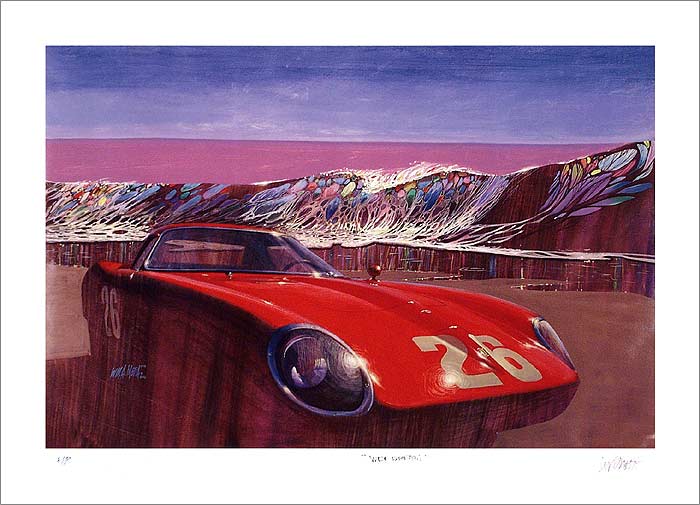 |
| I love the psychadelic waves in this piece. |
Walter Gotchske was the go to artist for Porsche during the mid 20th century. He painted elegant stand alone pieces for their catalogs, as well as painting these amazing racing images, pushing gouache to its limit with all the complex variations of motion he experimented with.
Alfredo de la Maria is a fantastic painter, pushing sunlight to its limit with his oil pigments. He is also extremely good at creating what look like the after effects of motion photography, and giving the designs he uses for that motion amazing personality and vivacity.
Juan Carlos Ferrigno was also amazing at painting motion. Many of his pieces are cropped in very close to the vehicles, but even so, his use of pigment and the brush strokes he commands really gives a sense of movement to the subject matter.
Also to mention but not at the top of my list are George Bartell, Gordon Crosby, and Michael Turner are all also good at painting movement, but I find more of their works to be decorative than kinetic. George Bartell in my opinion is better at figurative movement than when he paints vehicles in motion, but still very influential in that subject matter.
As much as I like these last few artists, I have learned from my favorites that sacrifice is a necessity and that rendering is less of the objective and concept is far more important. Manipulating the materials and finding the strengths of each of them is also important when searching for these abstractions.
Many of these artists can be found in this book that is long out of print but can still be found on Amazon or elsewhere on the internet. In it are also included 4 Berkeys that are almost worth the purchase of the book to acquire. Although the art is older art, it is a fantastic source of inspiration for painters, especially tech painters. I hope you find this art inspiring to your art whatever the subject matter might be.


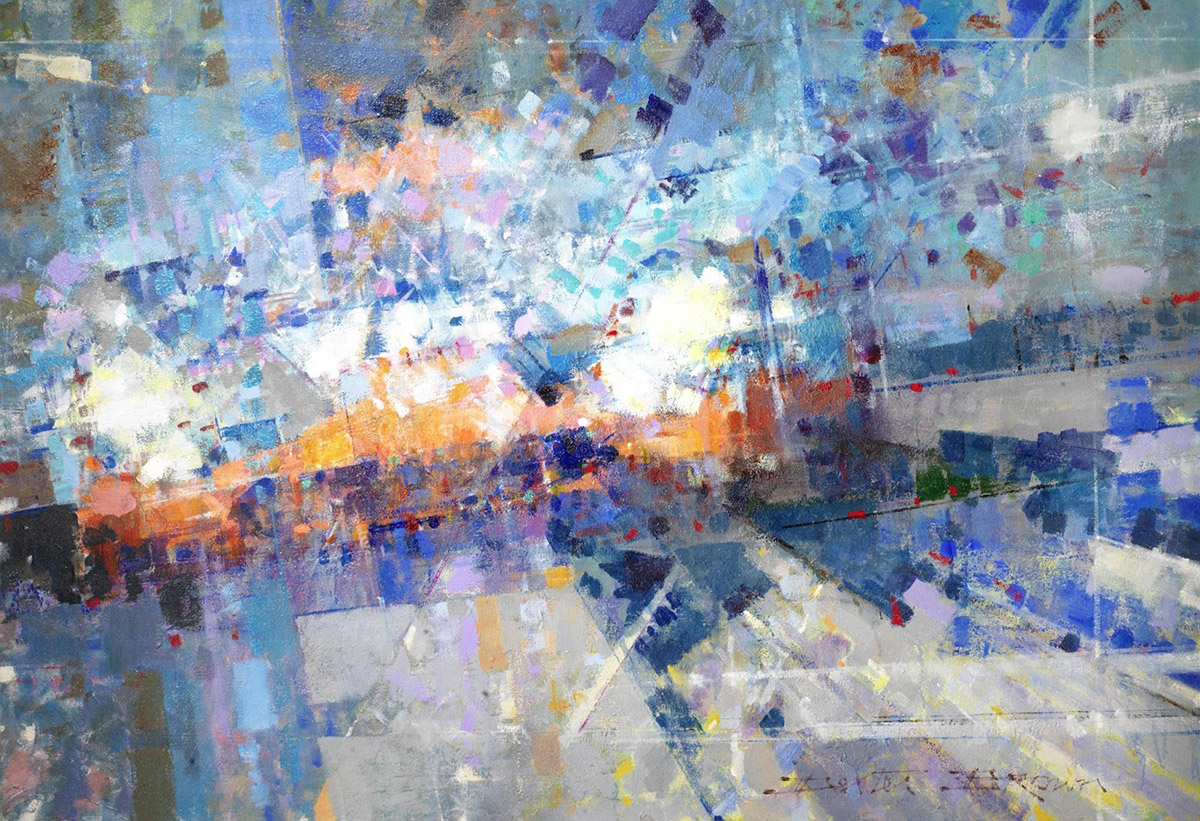
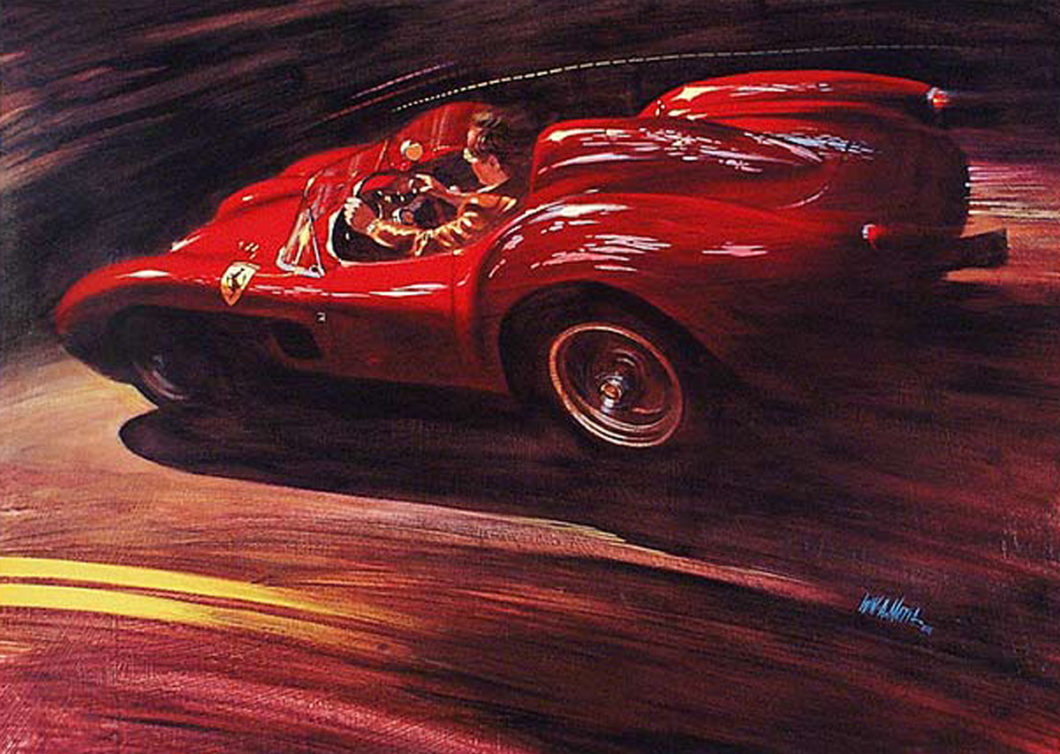


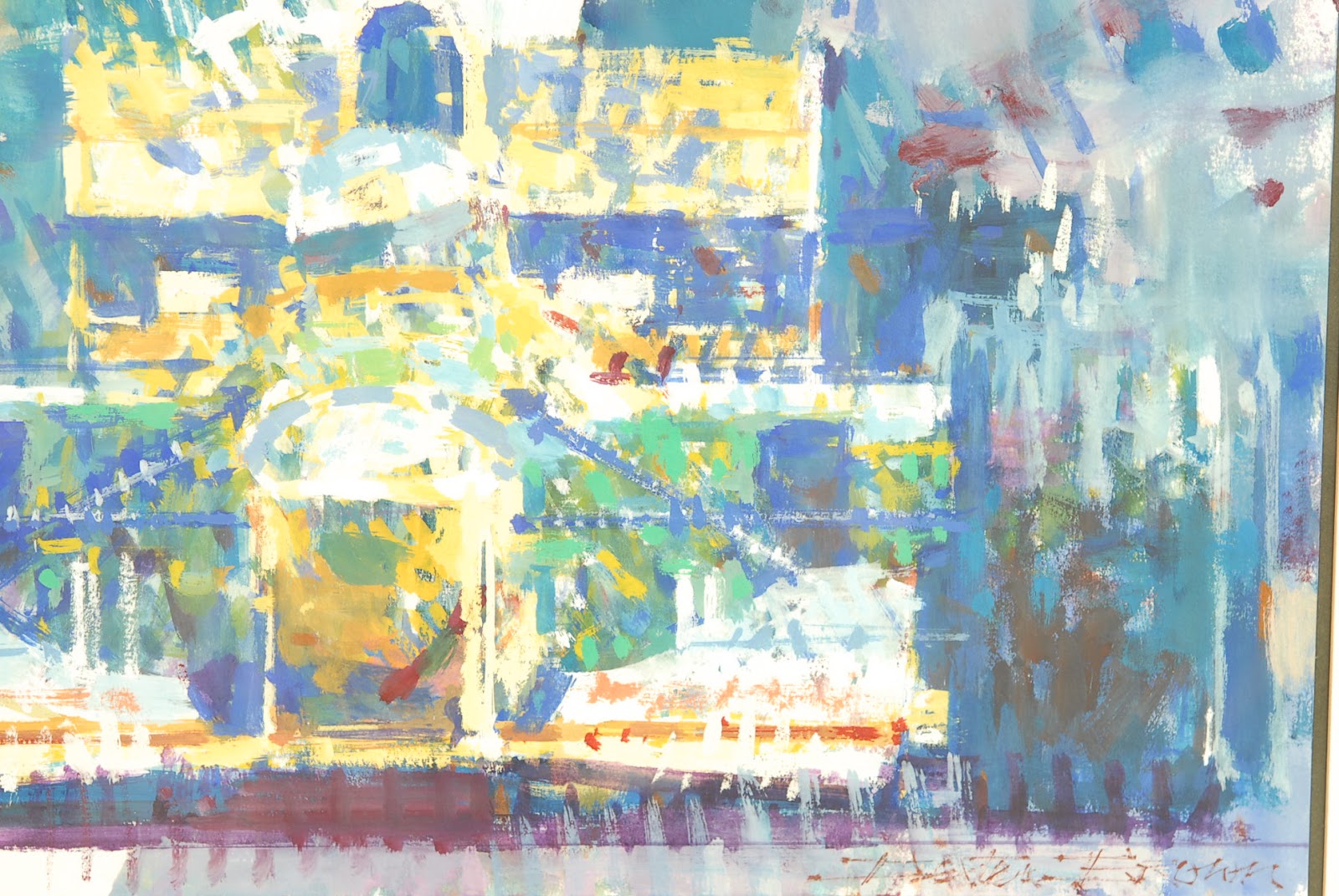
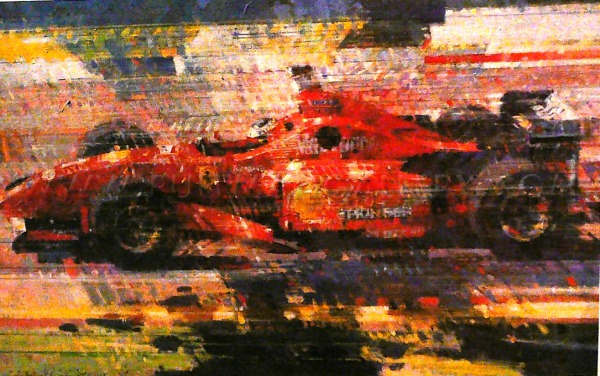
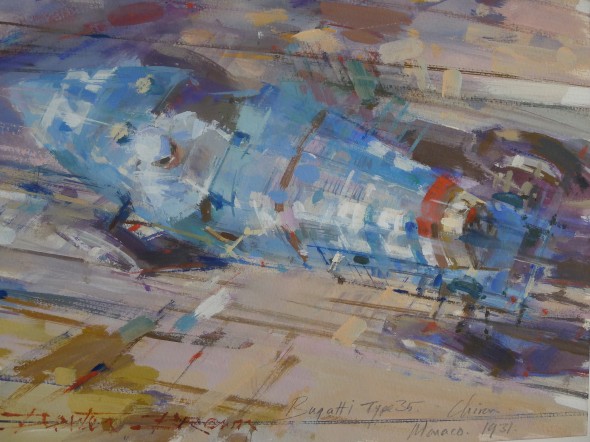
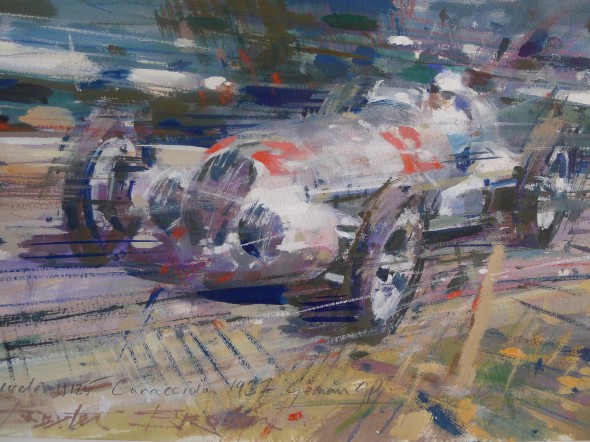


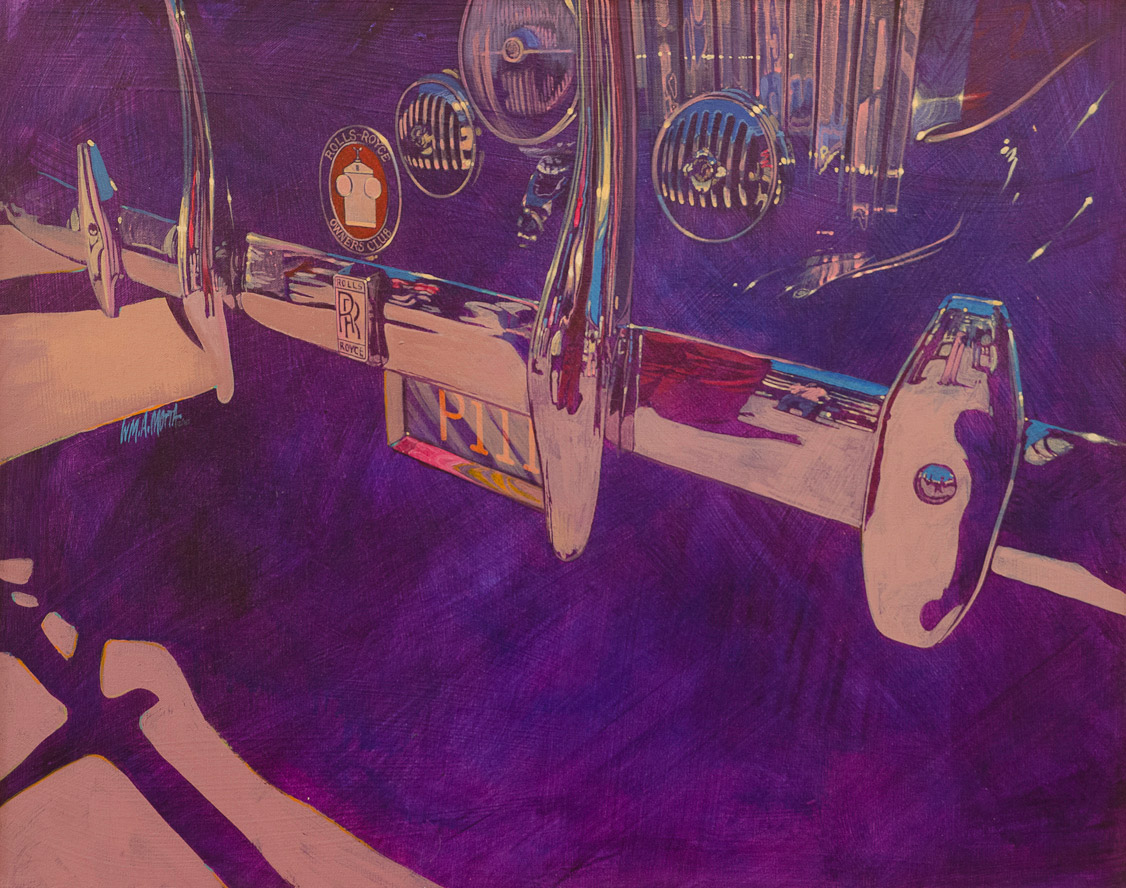
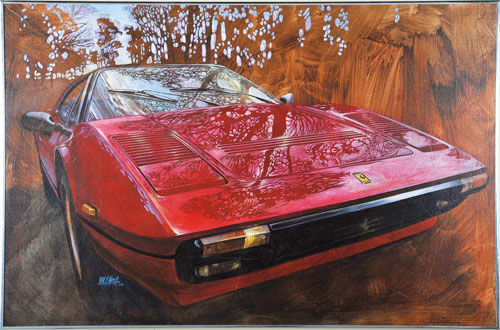
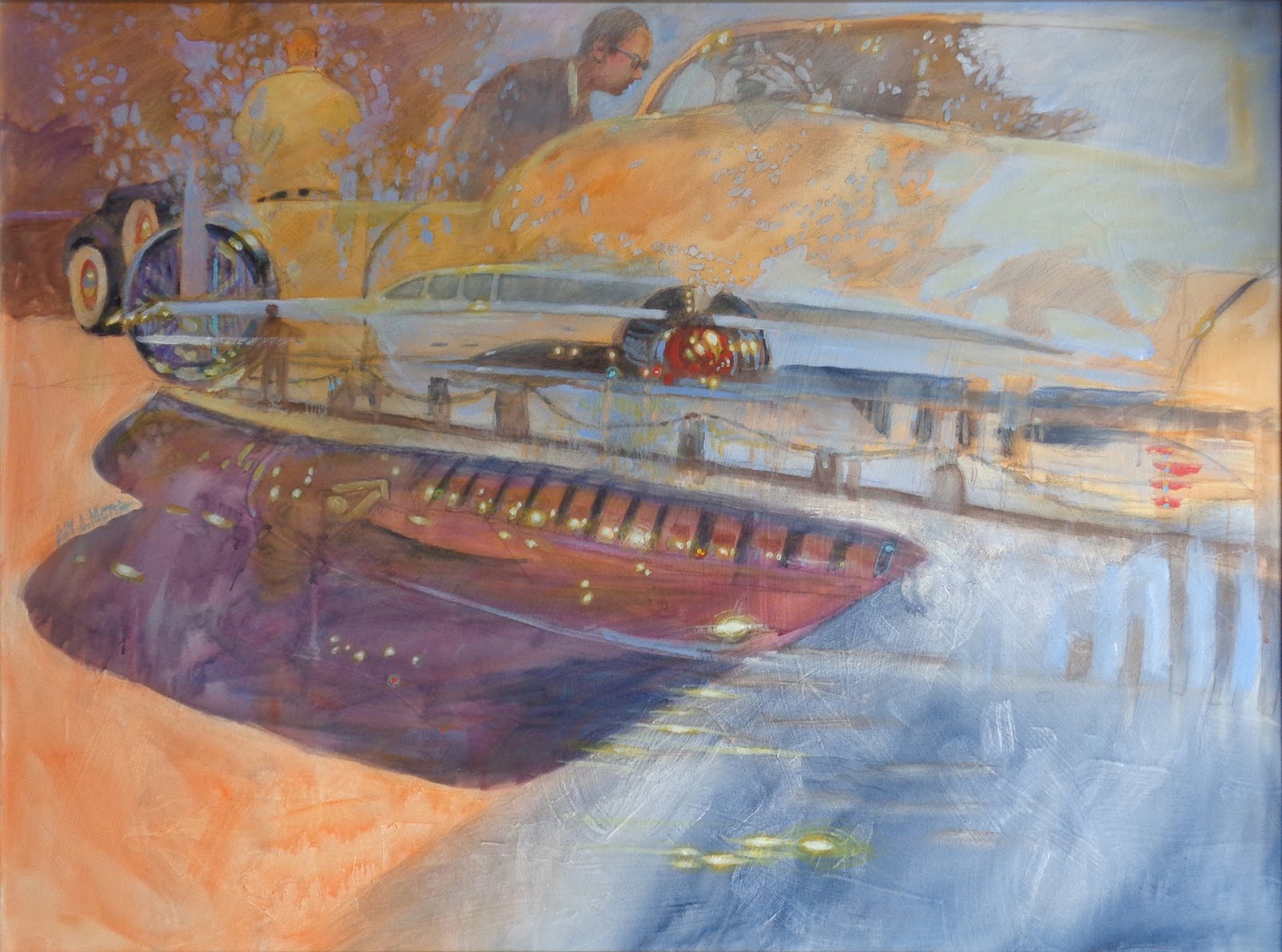
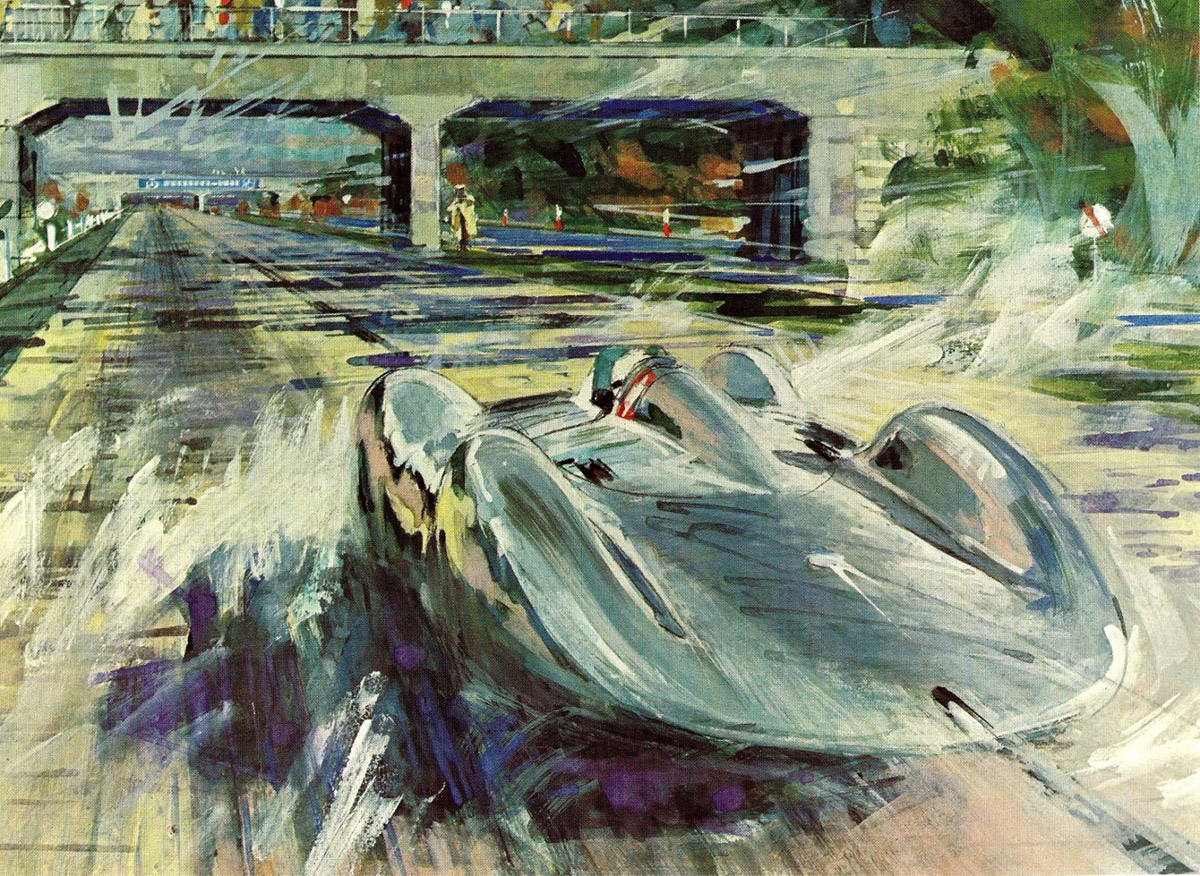
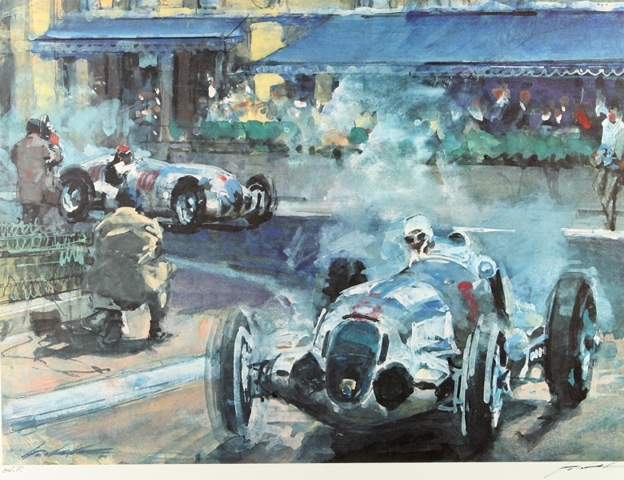
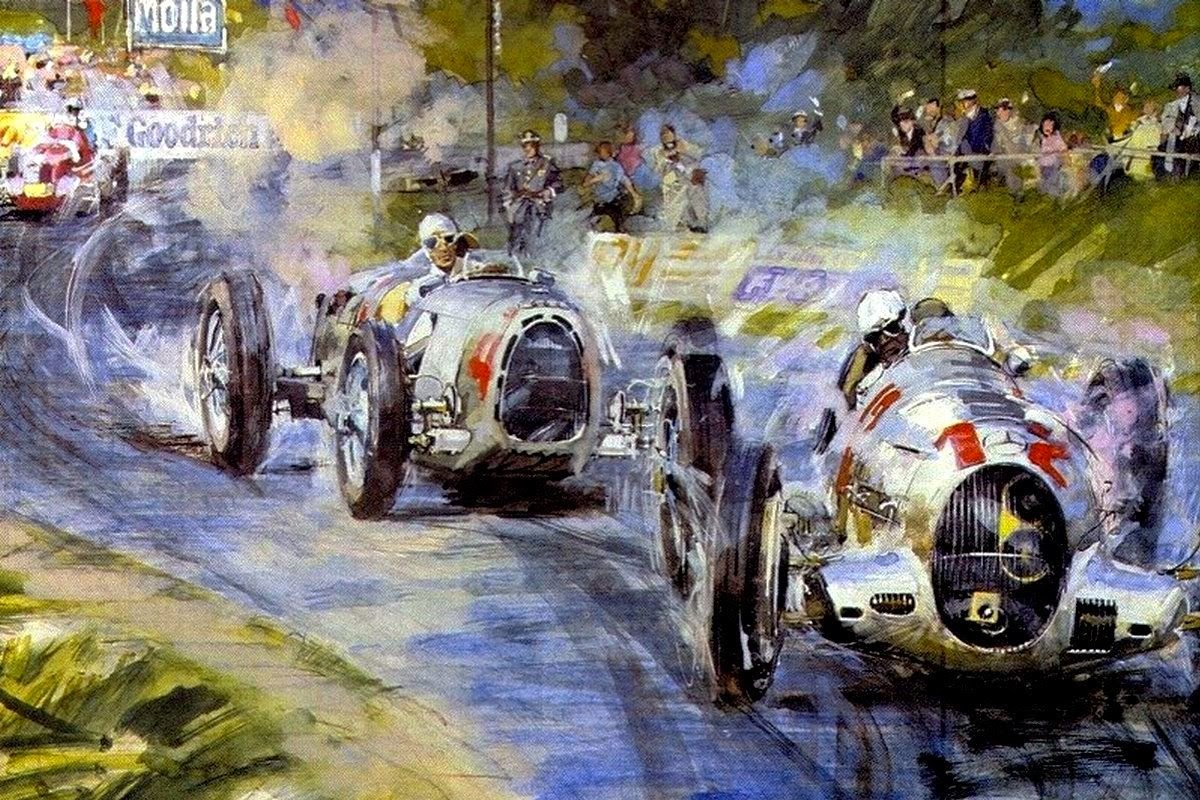
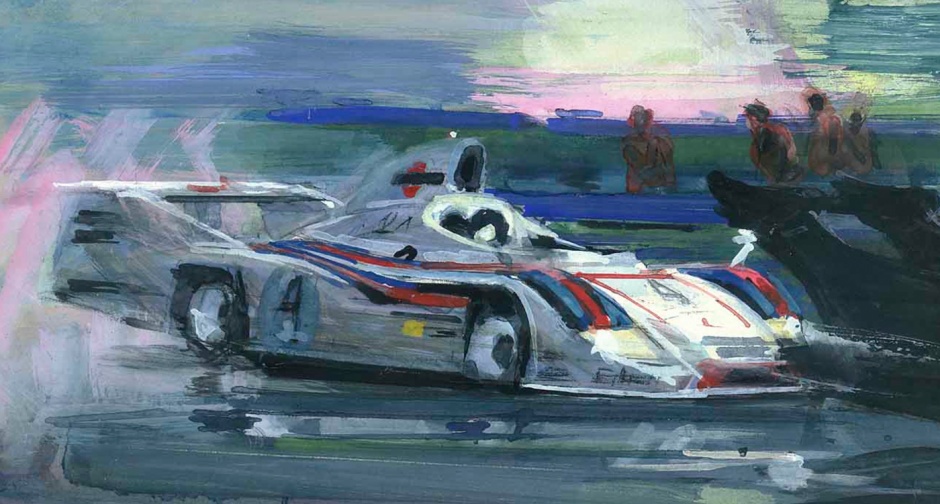
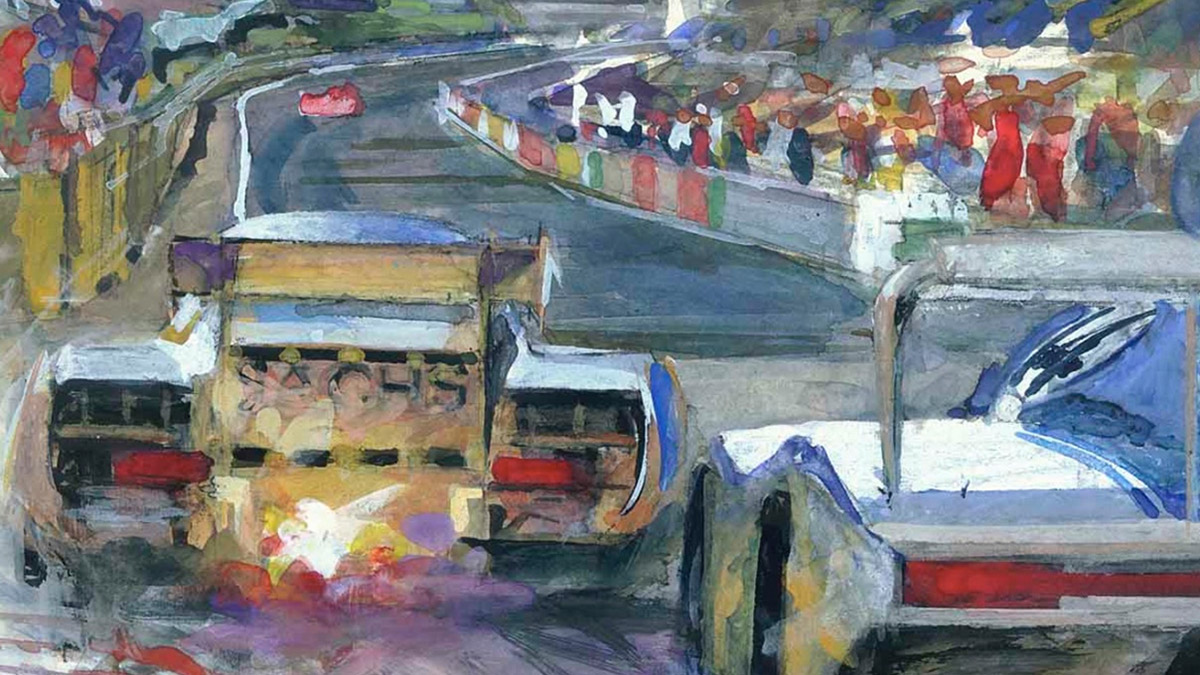
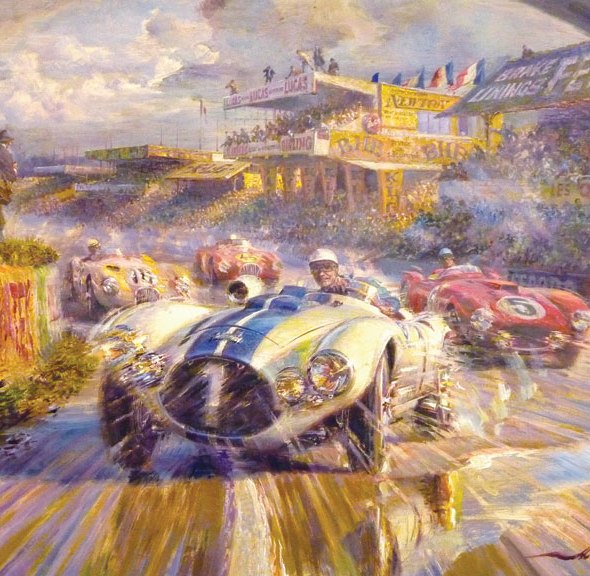

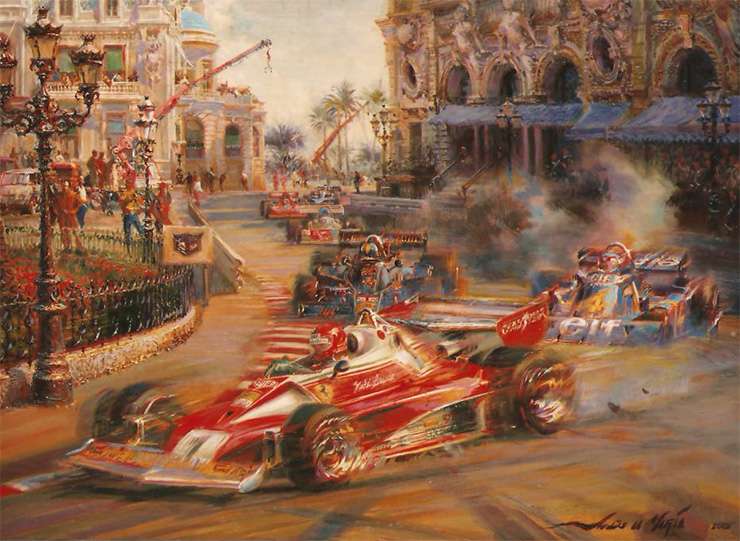
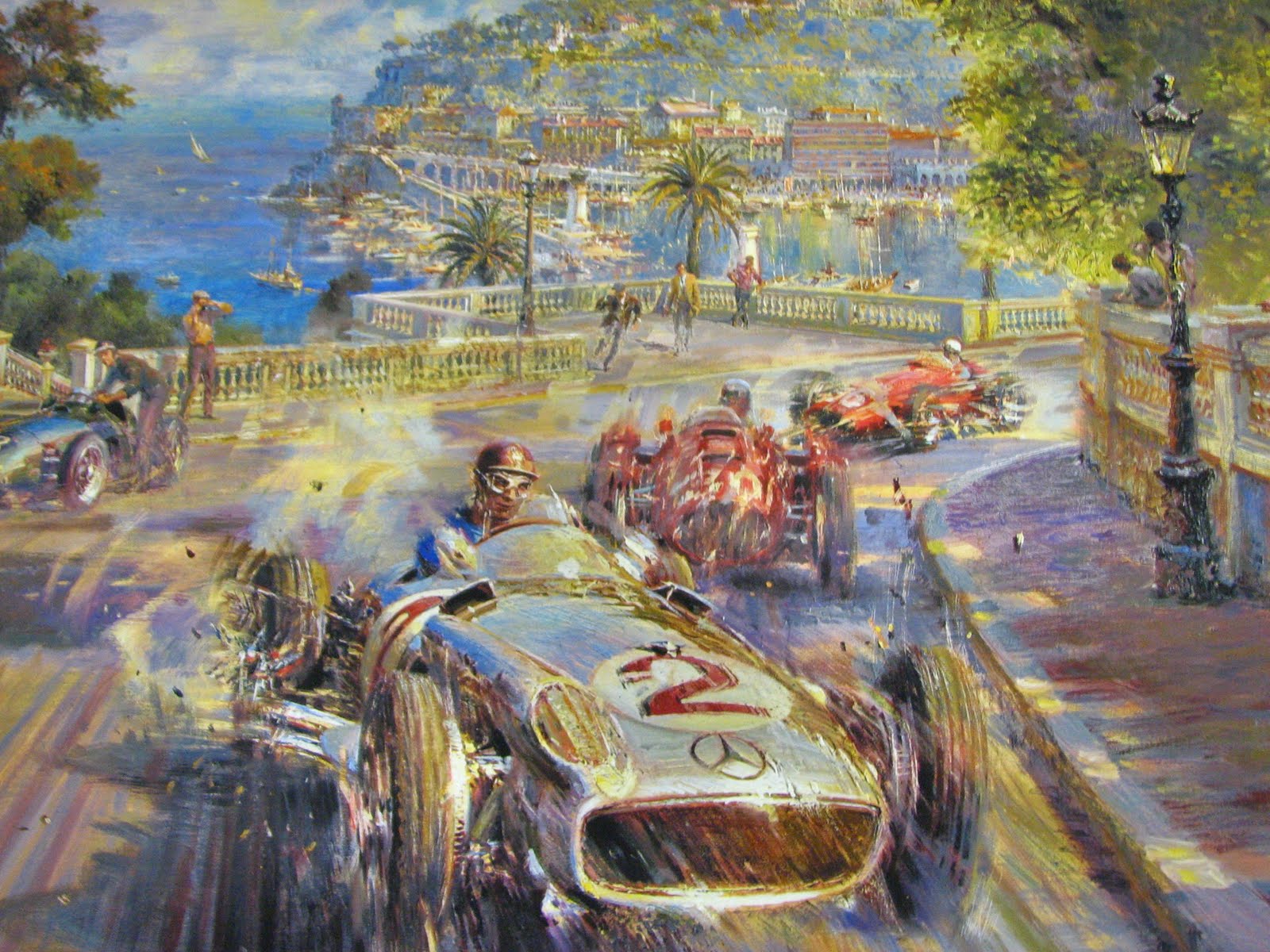
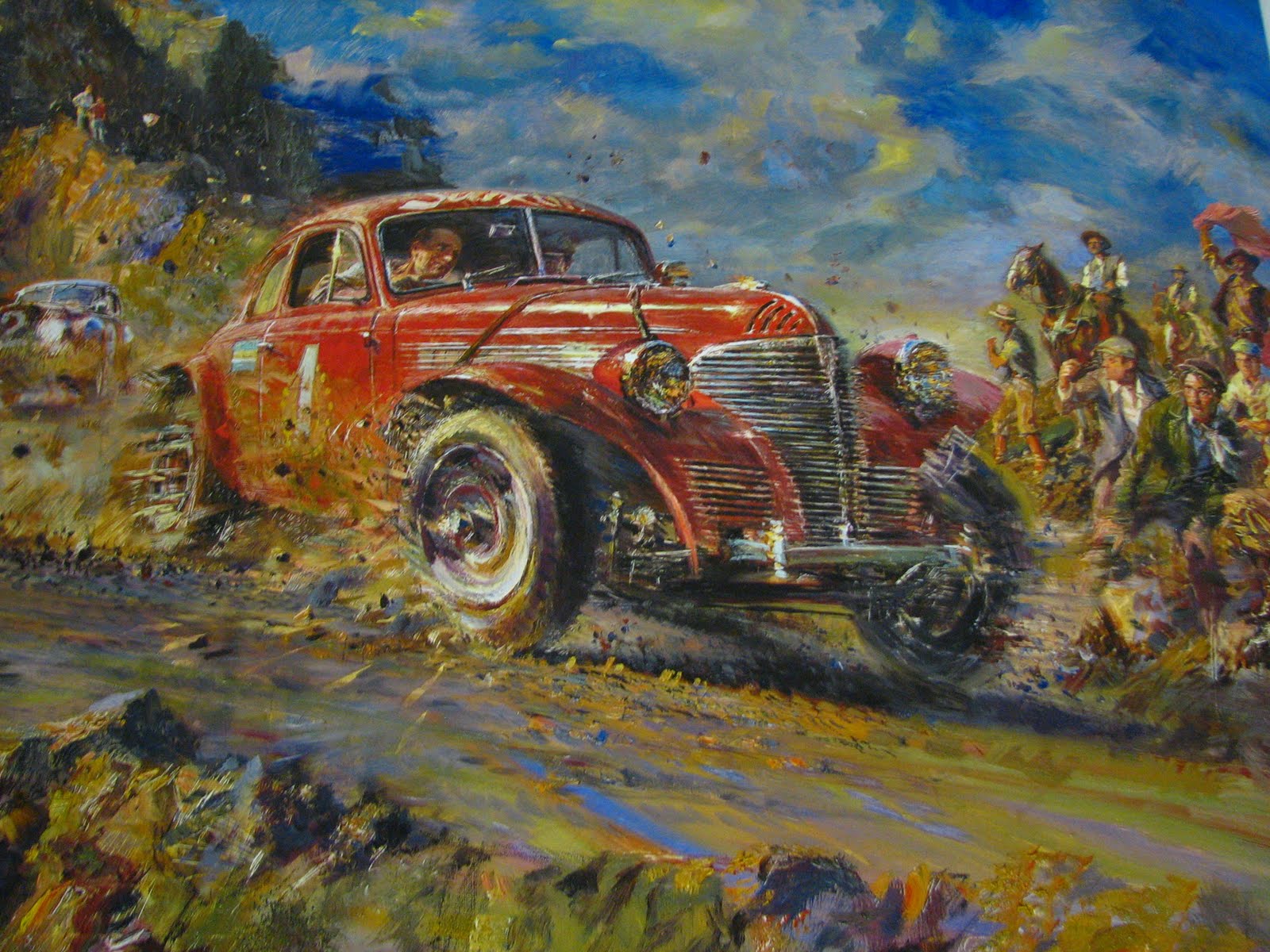
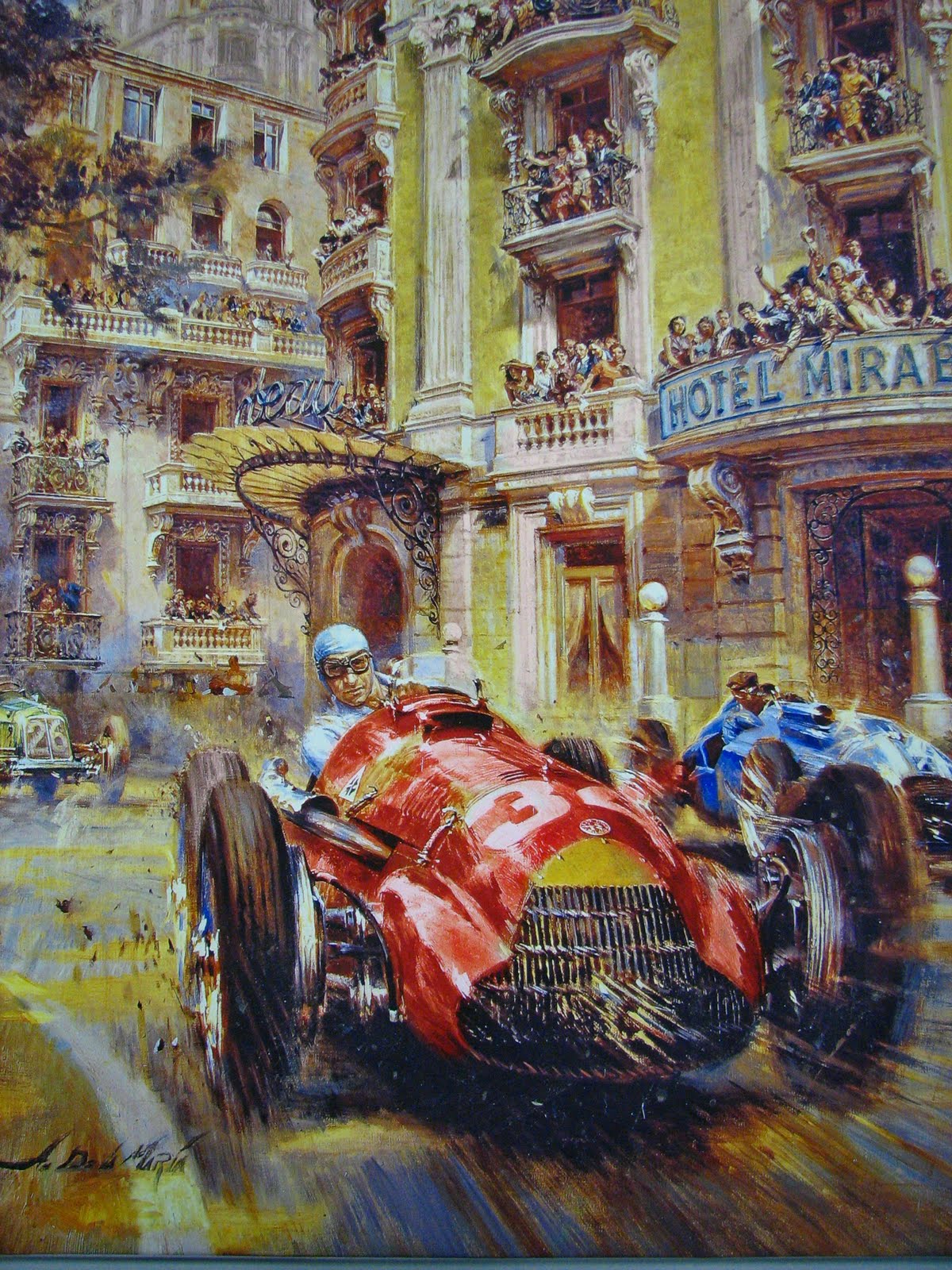
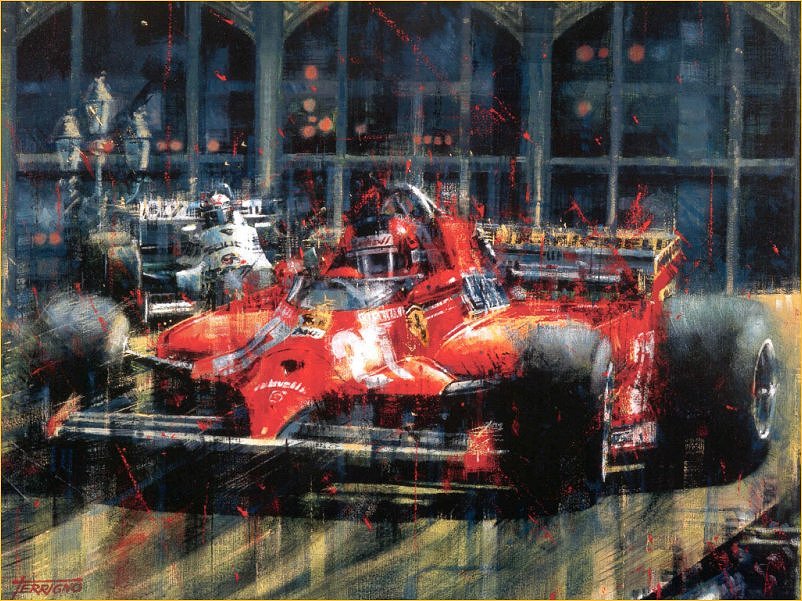
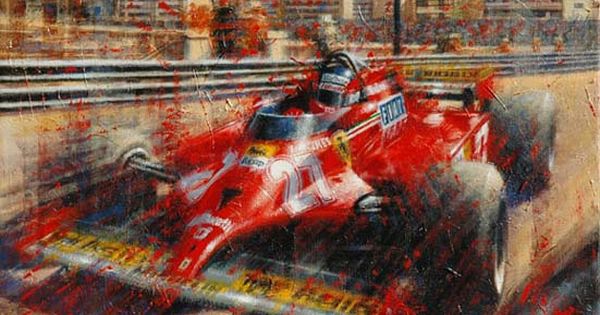
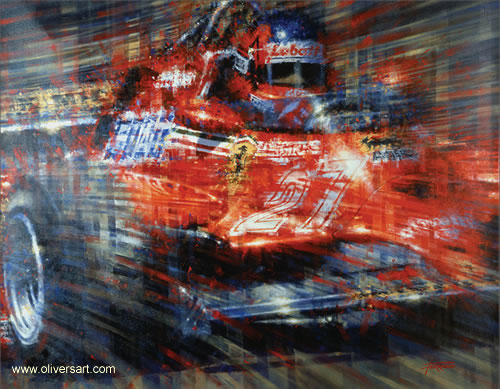

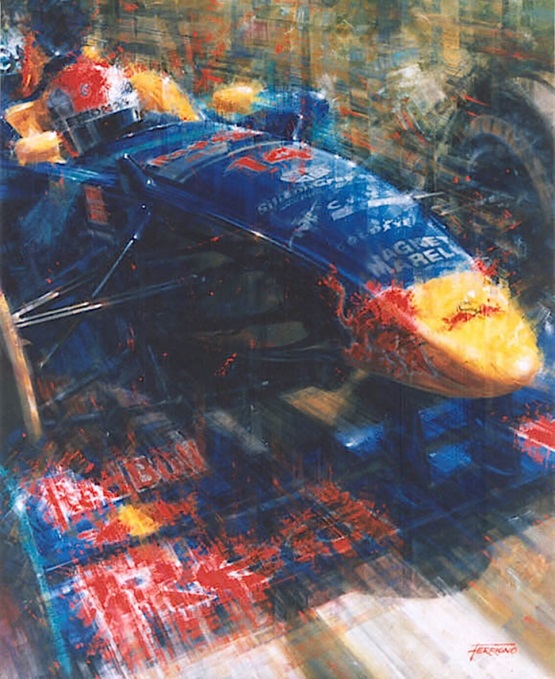
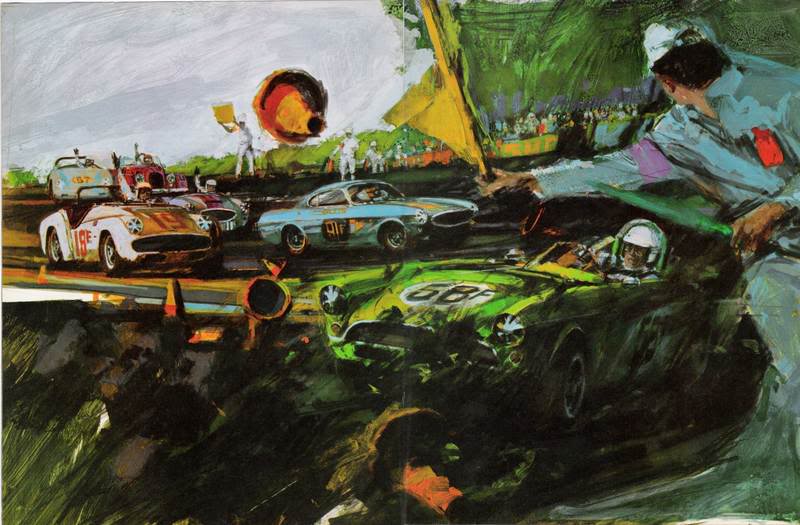
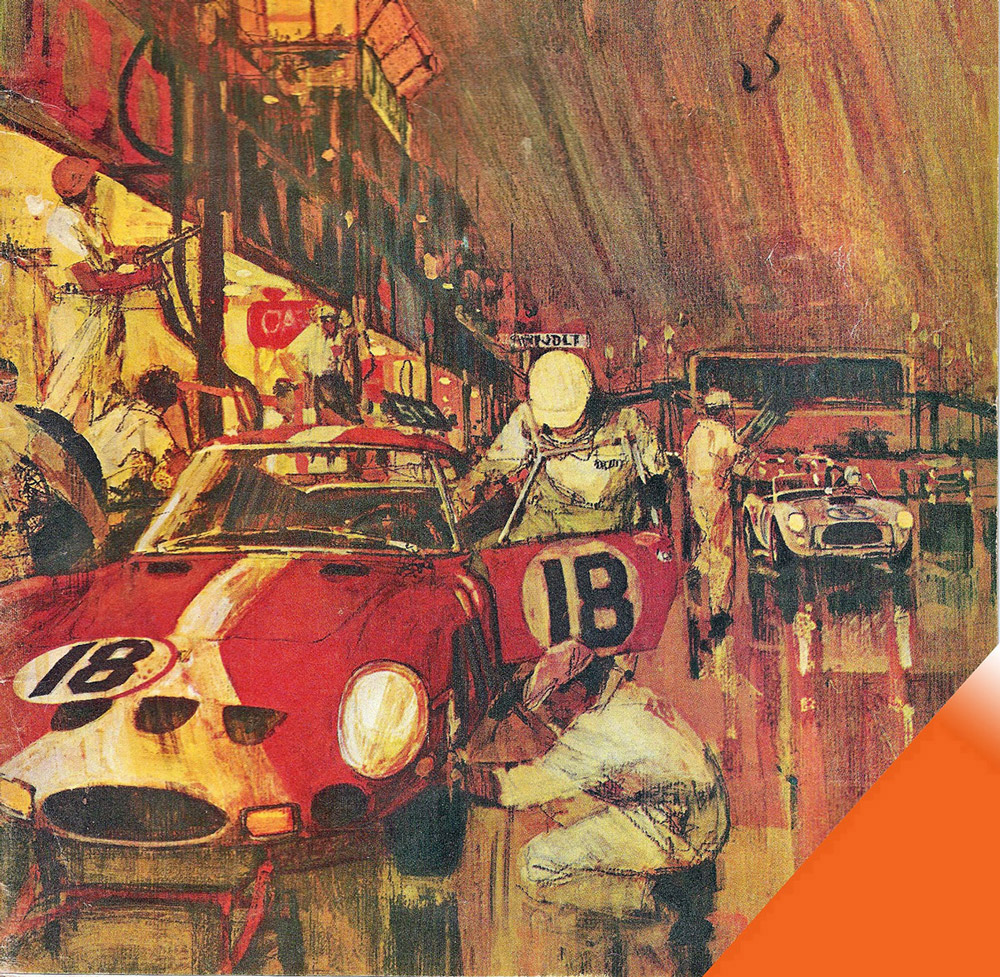
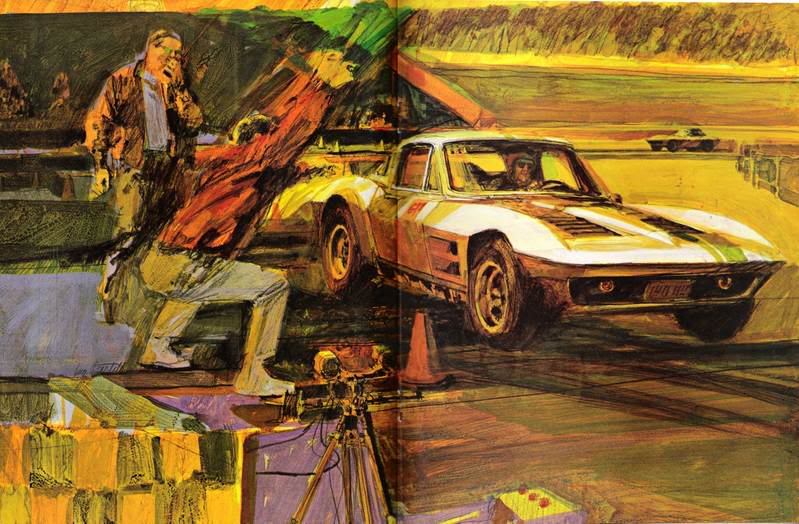

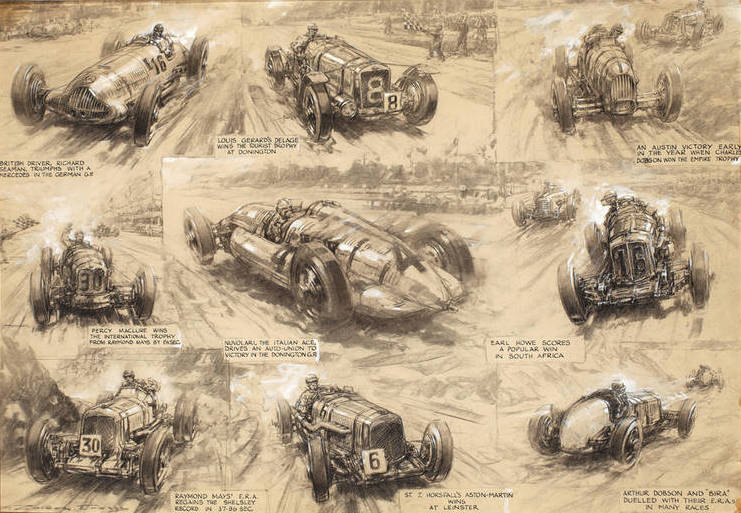
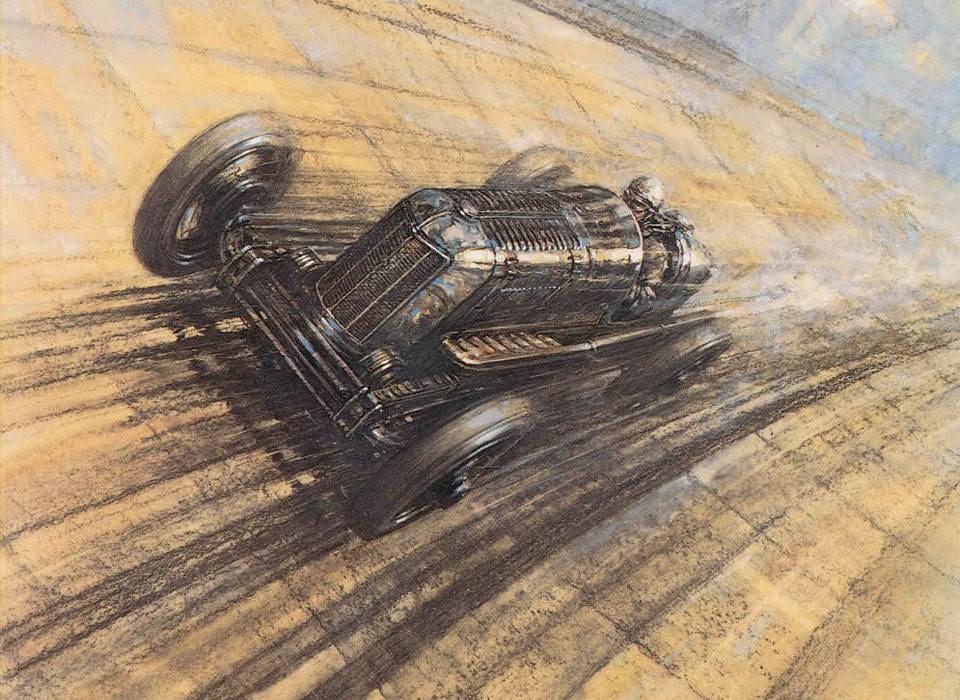
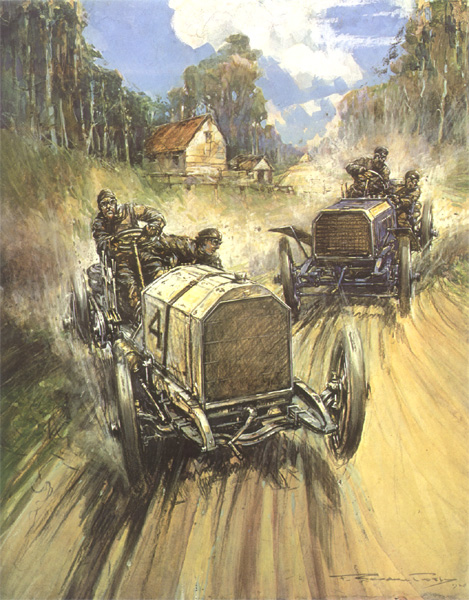
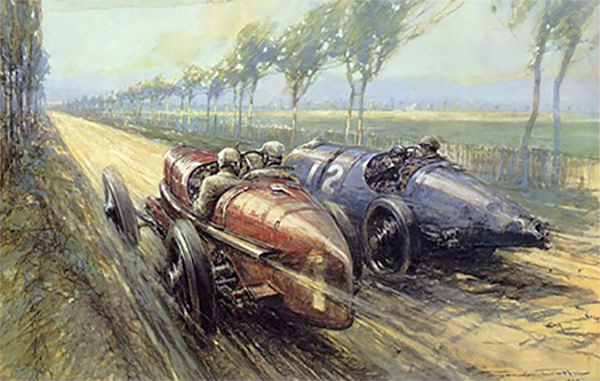
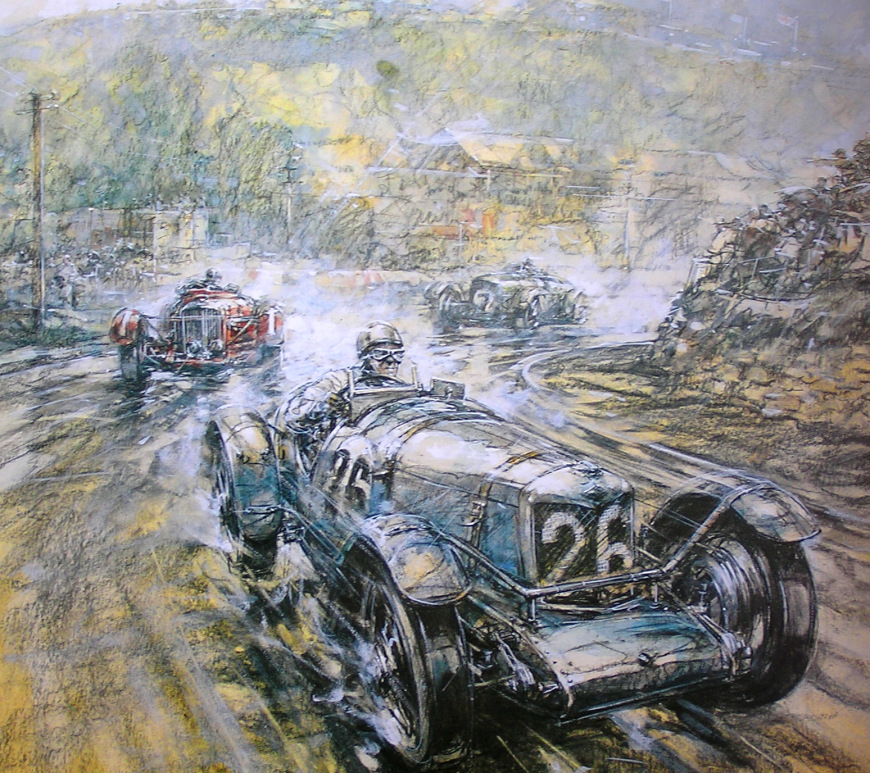
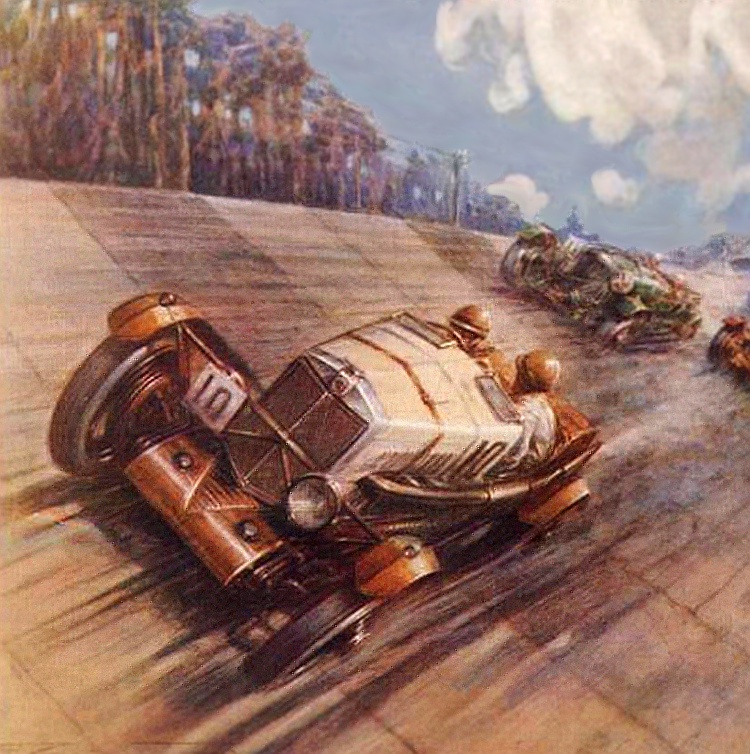

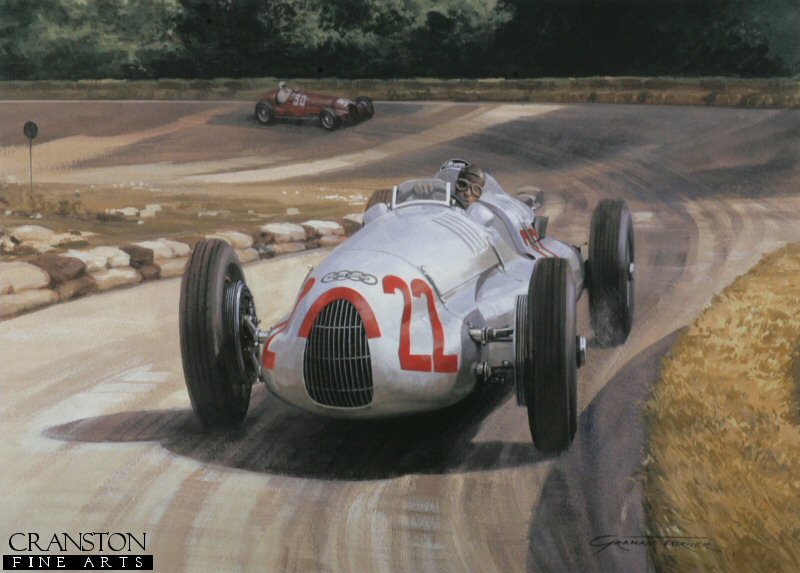

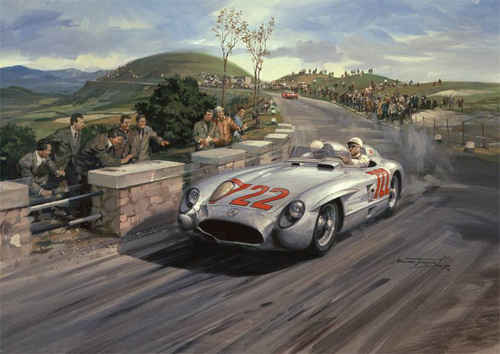
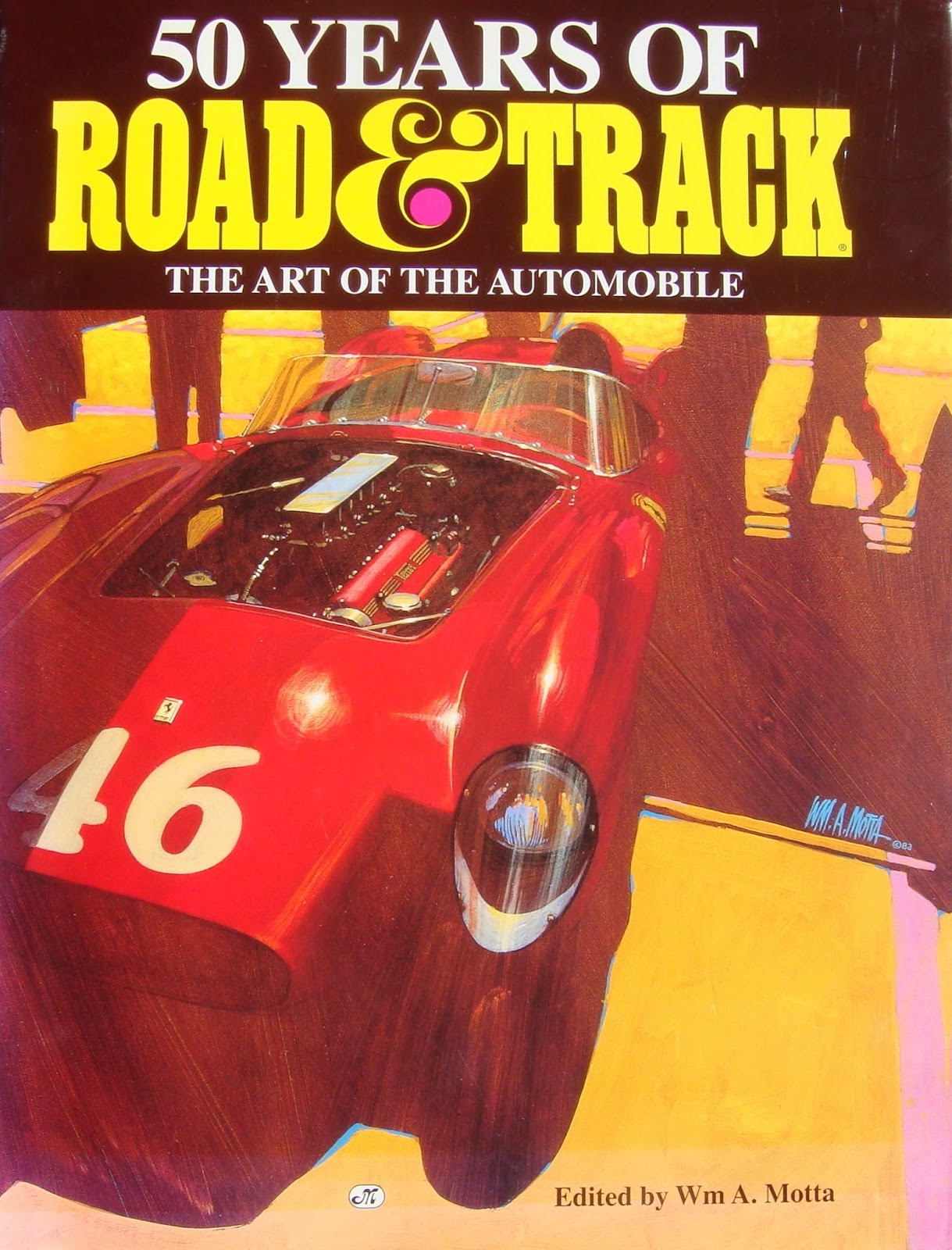
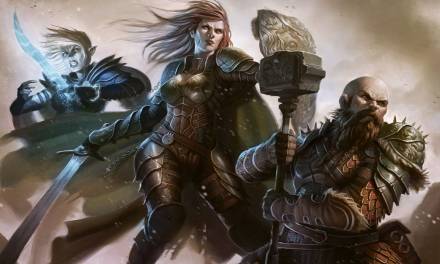
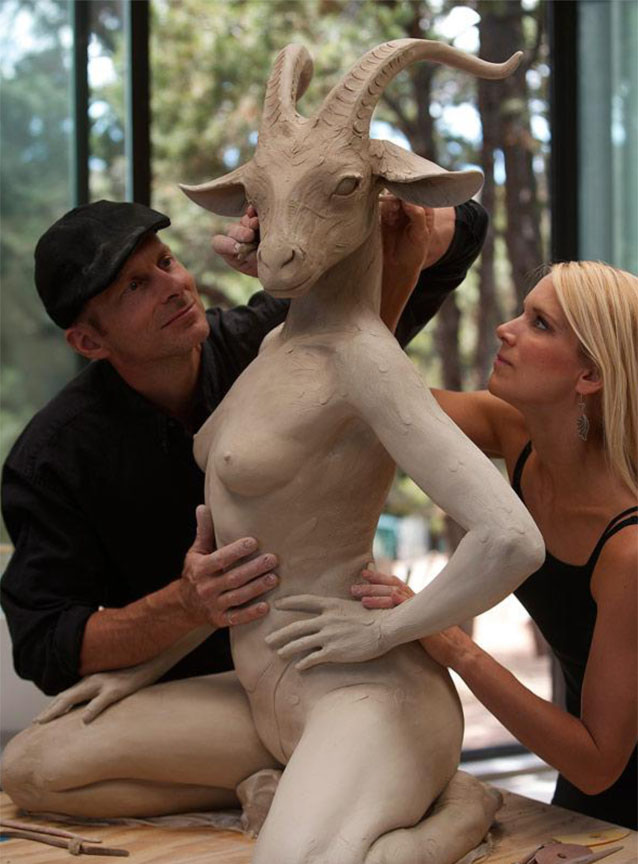
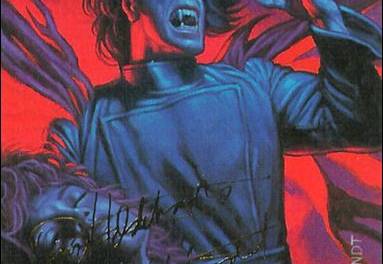
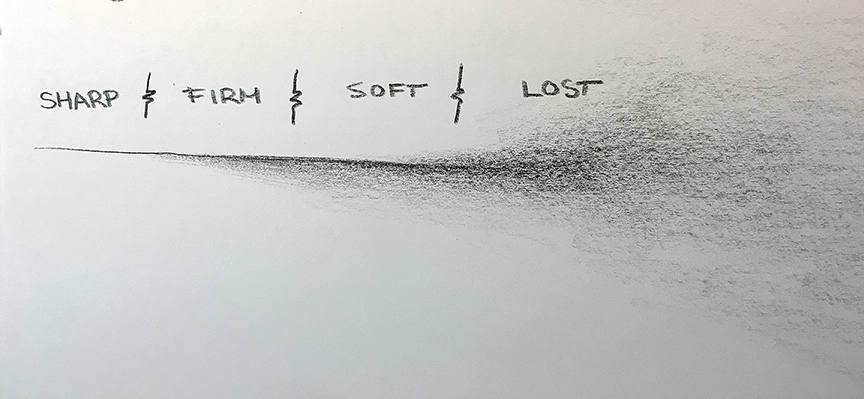

Really great piece, with some artists I haven't seen before. An automotive artist I find quite interesting with regards to motion is Ian Cook, I believe he uses RC cars in his process and is well worth a look.
I also the stylized motion in many of Bob Peak's work.
Thanks, Ron. I missed most of these artists when I was growing up, and it's a treat to discover them now. It's amazing how much they can get away with dissolving the form and still have the image read clearly. Our visual brain can have a lot of random bits thrown into the mix, as long as it's in perspective at at the right value. I like the ones where the perspective of the road and the car are off-angle relative to each other, which makes it look like the car is skidding.